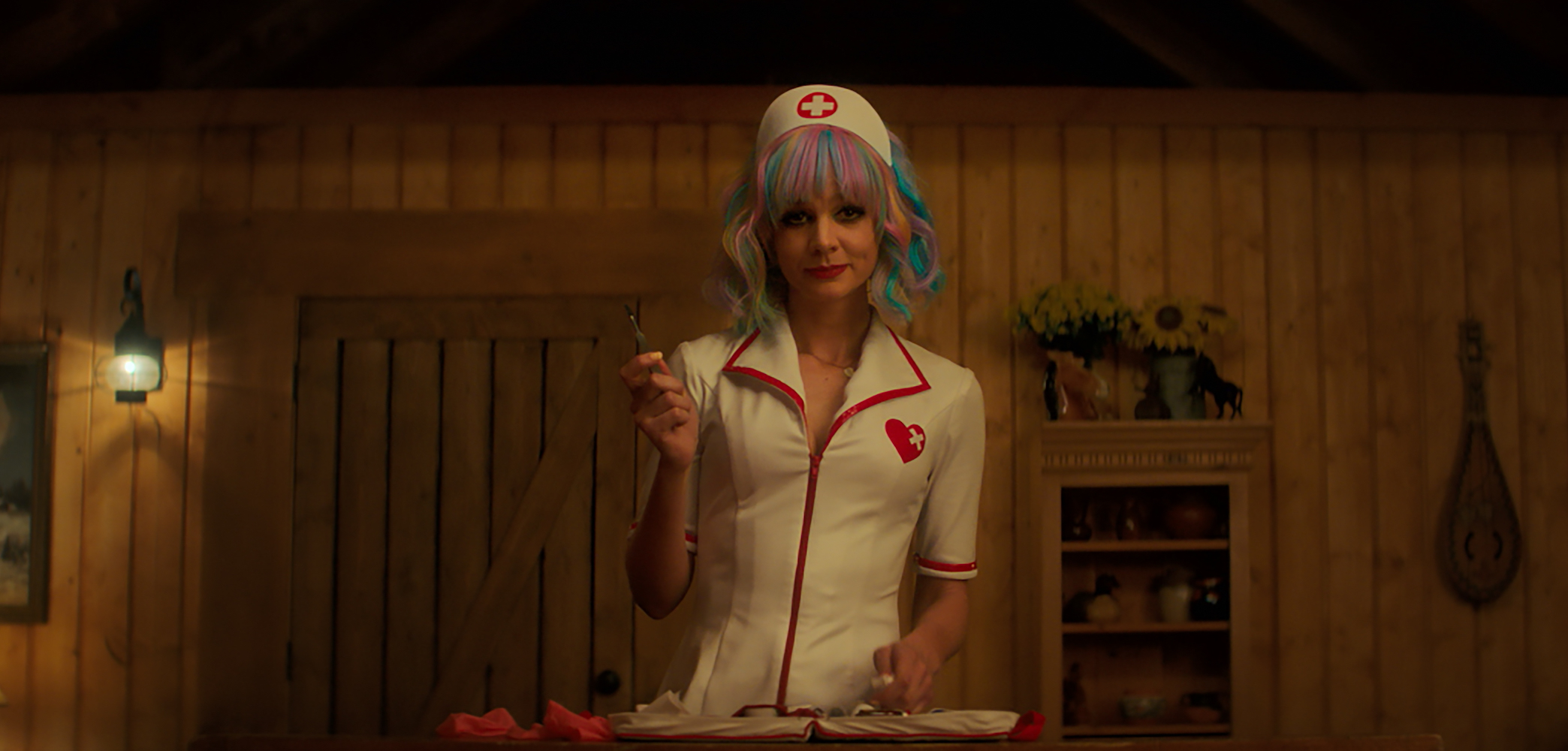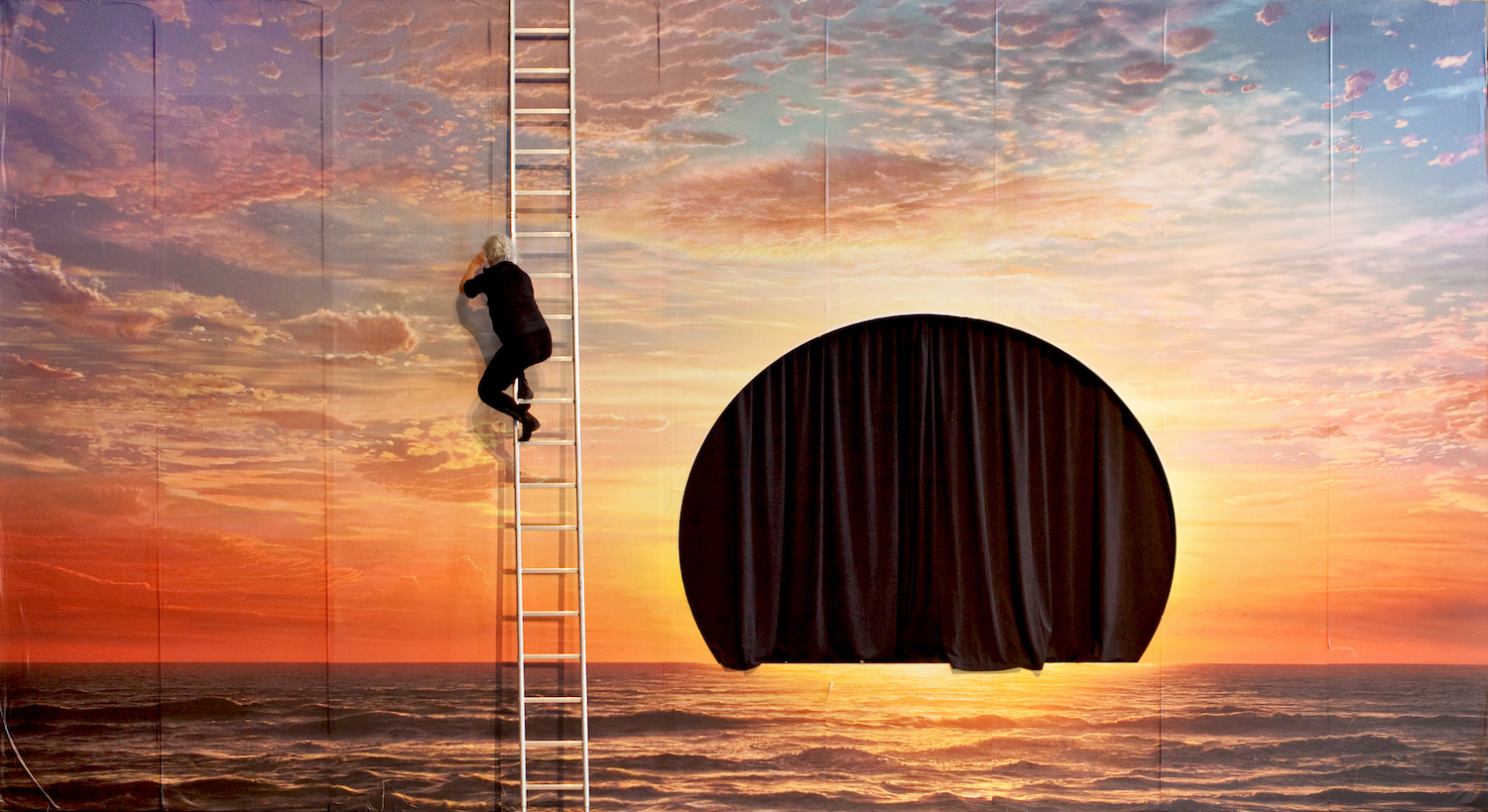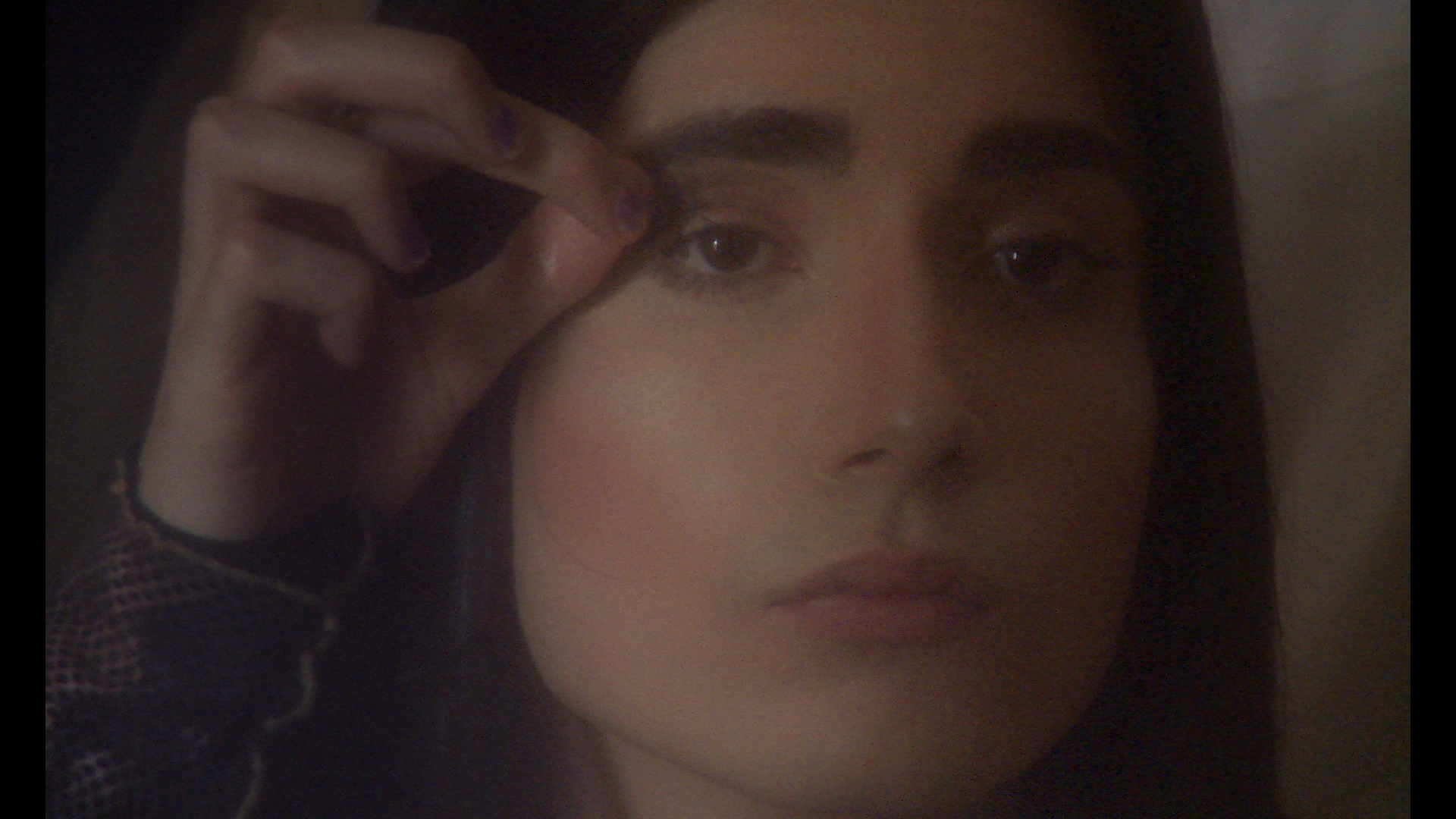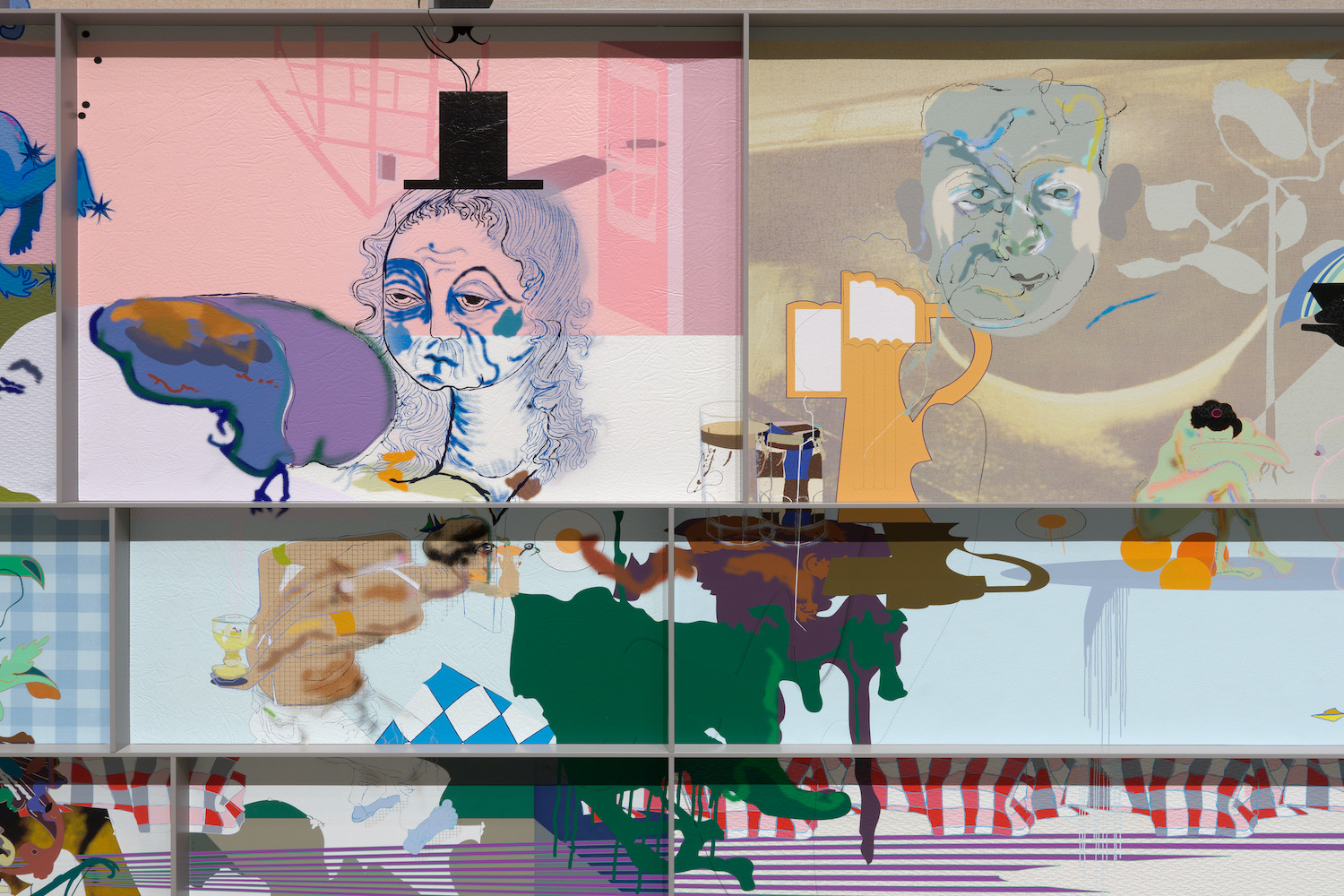The Stedelijk Museum in Amsterdam recently acquired Ulay’s pivotal work Irritation – There Is a Criminal Touch to Art (1976), which documents the artist’s performance of the theft, in 1976, of a painting by Karl Spitzweg — Der arme Poet (The Poor Poet, 1839) — from the Neue Nationalgalerie in Berlin, and its temporary installation in the living room of a Turkish immigrant family. Ulay was born in postwar Germany, which he left in 1968 to settled in Amsterdam, in the Netherlands. He took an active part in the local art scene by supporting the founders of de Appel, one of the first art institutions dedicated to then-new art forms such as performance art, situations, and environments. The Stedelijk is currently holding the first major retrospective ever organized of the oeuvre of Frank Uwe Laysiepen (1943–2020), known as Ulay. The room that concludes the exhibition has been programmed by the de Appel arts centre, and takes the form of a parallel exhibition in three chapters. The “Here is Ulay With” sequence, performed by contributors who echo the legacy of the artist’s praxis, began in November 2020 with Georgia Sagri, and will be concluded in March 2021 by Lotte Reimann. Having been invited by de Appel to intervene during the intermediary period in February, I am keen to perform my critical reading of Ulay’s oeuvre in close association with the Turkish artist Nilbar Güreş.
The decision prompting my desire to initiate a form of conversation is expressed in the title “Le Salon Turc.” Temporarily the Stedelijk becomes The Turkish Salon. The exhibition space plays host to exchanges that visitors will also be invited to experience.
This title makes direct reference to the Ulay’s action described above, involving the contextual transfer of a genre painting of the Biedermeier period, on view in the department corresponding with that period at the Neue Nationalgalerie in Berlin, to the household setting of a Turkish family’s apartment, furnished in their chosen style, located in the Kreuzberg neighborhood of Berlin. Ulay replaces the coordinates of a public institution with those of a private institution — an apartment located in a poor district, occupied by a family of ‘oriental’ immigrants. Although the occupants have given their consent, they are not told where this work came from. For a short period of time, the living room of this (guest worker) community becomes the setting in which the painting assumes its meaning.
Ulay carefully composed the score for this action, which was subsequently published in “Works and Words,” the catalogue of a ten-day event held in 1979, which is still to be found in the de Appel archives. It is one of the first examples of a score designed to create an artistic action, that I see as a curatorial one as well. The gesture of putting up and taking down a work, and altering its setting so as to change its angle of perception, can in fact be regarded as the very essence of the curatorial activity. What makes this score a one-off — or, in any event, a pioneering example of a new method of composition, which will become widespread — is, on the one hand, the act of taking on the viewpoint of the curator (the curatorial gaze), and, on the other hand, proposing, by way of the score as go-between, the reiteration of the act or, in any event, its extension. Even if the list of actions that inform the operation of moving the work may be read as a report, there is nothing to stop us from interpreting them as a directive. What is more, we can reckon that Ulay’s act is a reiteration of a precedent carried out by the Guerrilla Art Action Group (GAAG) in 1969, when they took down Malevich’s painting White on White (1918), on view in New York’s MoMA, and replaced it with a manifesto. Just as it is also a preparatory act for Christopher D’Arcangelo’s action in the Louvre in 1978, when the American artist moved the painting Conversation in a Park (1746) by Thomas Gainsborough to the floor and placed a text on the wall where the work had hung: “When you look at a painting, where do you look at that painting? What is the difference between a painting on the wall and a painting on the floor?” It is consequently clear from these works that curatorial issues, such as those which having to do with performance, transcend, from the 1970s onward, the practices of artists, curators, and the public, hitherto organized in distinct disciplines in scaled-down areas of competence, and as roles cast and imposed on all those participating in cultural conversation. Conceptual artist Michael Asher’s displacement of Jean-Antoine Houdon’s sculpture depicting George Washington, at the Art Institute of Chicago in 1979, an emblematic act of institutional critique of the day, also illustrates this break with allotted areas of competence.
That historical period tallied, moreover, with that of the Bretton Woods accords and with the period when, as far as the economy was concerned, there was no further reference to the gold standard. The reaction by Arab countries, producers of raw materials, to the principle of floating exchange rates led to the two oil crises, which marked the entry by Western governments into a population-oriented biopolitical system. Disciplinary normalization consists in positing a model, and the operation of normalization consists in trying to make people, gestures, and acts comply with this model. The mid-1970s marked the end of the Cultural Revolution in China and the beginning of the dictatorship in Chile and Argentina; the physics of power changed. Per Foucault, “homo economicus now appears as the correlative of a governmentality that will act on the environment and systematically modify the variables of the environment.”
The exhibition “Le Salon Turc,” on view at the Stedelijk Museum, conveys the intention to prolong, by echoing the living room of the immigrant family in Kreuzberg, the score activated by Ulay, whose aim was to give rise to a conversation about art and politics by re-polarizing the context for the perception of a work of art. As the artist indicated in 2016, after the fact, his act was “a protest action, first of all against the institutionalization of art, secondarily about discrimination against foreign workers” (The Observer); he was thus addressing the least privileged classes, both at the national level and in a more global context of ongoing geopolitical conflicts that today are experiencing a new intensity.
The words le salon turc make reference, historically, to the decorative style chosen for a room designed in 1777 for Marie-Antoinette at Fontainebleau castle, and more particularly to “Turquerie” (loosely, “Turkery” or “Turkishness”), an aesthetic fantasy that appeared from the seventeenth century onward in Europe, preceding the Orientalist style. The Biedermeier style and the Orientalist style were contemporary, but they referred to very contrasting political strategies of identity. On the one hand, for France, Orientalism was incarnated by French colonization and its quest for exoticism, after the loss, in 1870, of some of the regions previously situated inside the country’s borders. On the other hand, for Germany, the Biedermeier style was translated by a promotion of things domestic, echoing the new great nation with the voice of unity.
The term “Biedermeier” denotes an apolitical and somewhat conservative cultural movement, following on from the post-Napoleonic period that had given rise to pessimism and disillusionment, when a whole generation of oppressed people sought refuge in an idyllic, simple life, refocused around the family cocoon and informed by wholesome values. Contestation had to be less head-on, and the painter demonstrated a diversion from the usual means of satire about contemporary society. He took refuge in the attic, as in the picture Der arme Poet, to count his lines of verse in the only space of freedom he still had.
With the Biedermeier style, the interior — and the living room in particular — assumed a sudden significance, which persists in Jean Brusselmans’s Dame au canapé (Lady on the Sofa, 1937) which now hangs in Le Salon Turc. This painting from the 1930s, on view in the Stedelijk Museum collections, replaces the Spitzweg painting in my interpretation of Ulay’s Irritation.
As a French curator invited to offer a critical reading of the Ulay work, my response is to write a score of my own.
I have chosen to offer it in a conversation with the artist Nilbar Güreş and the curator Danai Giannoglou who organizes “Here is Ulay with” for de Appel, which extends to exhibition guests and visitors. The work Under the Skin (2019) on view in the salon-exhibition is a sculpture produced in collaboration with the women close to the artist in Turkey. Its inspiration stems from the Turkish expression Bir yastikta kocasinlar (May they grow old on a pillow) and comprises an ornamental pillow made to accommodate the united bodies of a young married couple. The artist reverts to this principle but blurs genres by attacking the patriarchal foundations of the home. As in other works that came before this one, the artists grapples with the determinism, Eastern and Western alike, that allocates women to the home: in The-Living-Room (2010) she disappears in the seating of the traditional Turkish furniture, in Overhead (2010) her head is rendered invisible beneath a pile of household laundry thus contrasting the expression tête de turc — scapegoat or whipping boy — which rather exacerbates the presence of the subordinate. This insult Türkuenkopf, which in German infers “big head,” is the one that Nilbar Güreş heard upon arrival in Salzburg in 2000. There, twenty years later, the discussion continues over the recent acquisition by the Museum der Moderne in Salzburg of one of her works involving ‘oriental’ trim (with tassels and the like). Two queer bodies, brought together as one in Güreş’s Under the Skin, will be placed in relation to Jean Brusselmans’s Biedermeier-style picture in the last room of the Ulay retrospective.
Orientalism, according to Edward W. Said, is the East created by the West. This is a reverse projection, an erudite discourse that turns into an imperial institution: “Orientalism has played a major role in this transition which culminates, strictly speaking, in the world in reverse.”
The fiction of a “Western civilization” is constructed, according to the author, on an obvious Orientalism, that of colonization, and on a latent Orientalism: all those who have written about the Orient, even Flaubert and Nerval, have seen “a scene demanding attention, reconstruction, and even redemption on the part of the West.”
The vantage chosen by Ulay for viewing Der arme Poet resituates the economic subject of poverty, in contrast with the spanking-new International-style architecture of the Neue Nationalgalerie constructed in 1968 by Ludwig Mies van der Rohe, where the painting could previously be seen. But Ulay does not stop there. He updates the social context of the poor poet depicted by Spitzweg using the minorities of Kreuzberg — the immigrants, delinquents, women, and homosexuals with whom he himself identifies.
For all this, he may well have obtained the consent of the Turkish family to hang the painting in their home after he had stolen it, but he hid where it came from by merely presenting them with the fait accompli, thus making them responsible for dealing with the ensuing interactions with the police and the curators who came to retrieve their merchandise.
Ulay’s act, which preceded Said’s publication in 1978, perpetuated the aforementioned latent Orientalism by turning the apartment into an ‘oriental’ set and the Turkish family into extras with no lines.
There is, however, no doubt that Ulay shares with Said the desire to “go beyond the coercive limits imposed by thought, and attain a knowledge exempt from any dominating spirit and essentialism.” Put quite simply, this task is a hard one (including the one I myself am striving to attain here) and is forever subject to the historical moment from which one perceives it.
Might Nilbar Güreş’s work, within the exhibition “Le Salon Turc,”give voice to the ‘oriental’ reference of Ulay’s action? The sculpture also renders perceptible the texture of the epidermis of race-less and de-racialized bodies. The reversal of perspective that this new visual score invites, accompanied by the musical pastiche Carnaval des animaux [Carnival of the Animals] composed in 1886 by Camille Saint-Saëns, underlines the initial score produced by Ulay by stealing or usurping a pictorial representation belonging to German public heritage.
The score for “Le Salon Turc” multiplies the angles of approach over a reversal of values present in artistic, curatorial, and musical practices.
These visual strategies sometimes make use of appropriation, pastiche, caricature, and parody, with a view to constructing a “we” on the back of a fantasized “other.” But these tactics are also often adjusted to a conception of the individual based on recognition of and attention to (‘autrui’ in French) a real other figure. These paradoxes are to be found in the Carnaval des animaux, which contrasts the bestiary of natural sciences with the biblical poem of genesis and flood. In the end it has to be noted that this musical work owes more to a masterpiece of ‘oriental’ literature, Kalīla wa-Dimna (كليلة ودمنة), than to Aesop’s fables.




